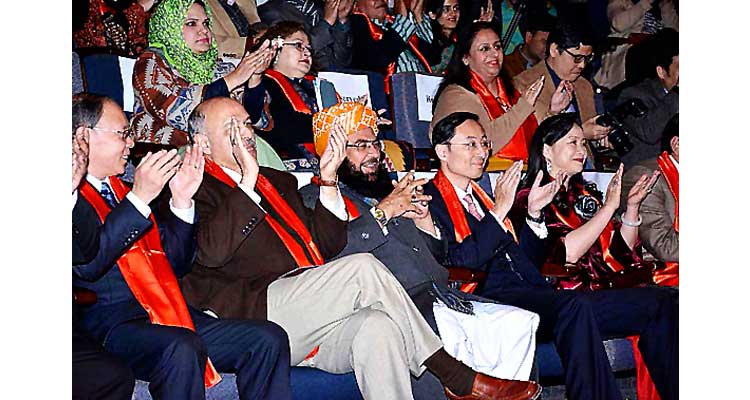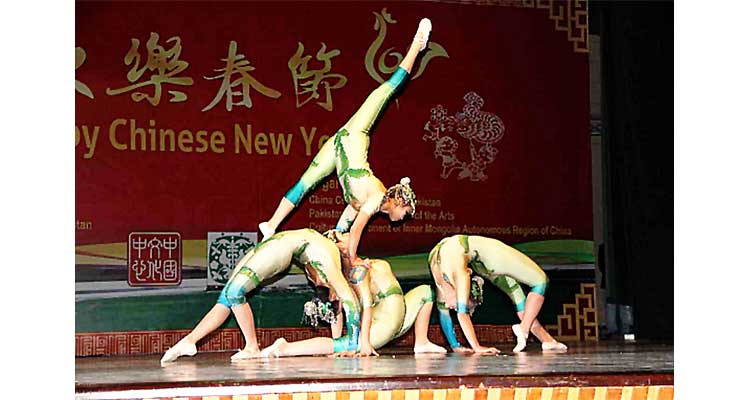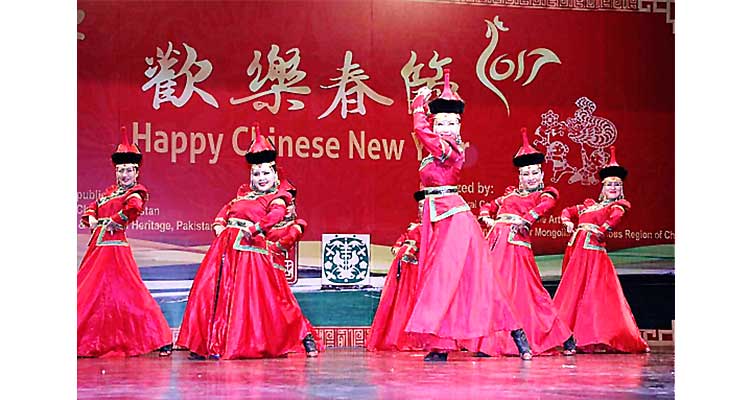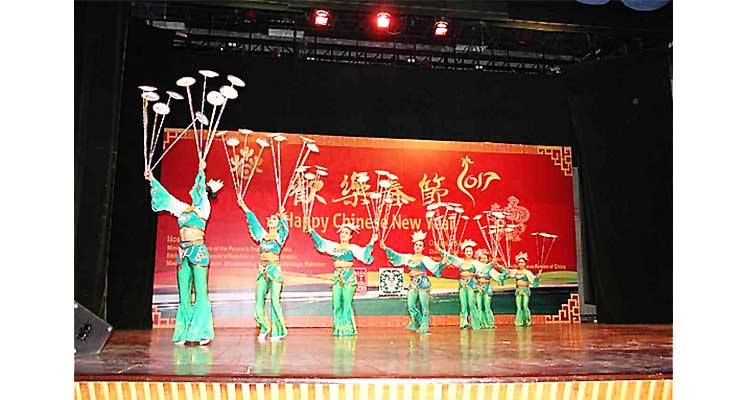Written by: Zainab Hasan
Posted on: January 20, 2017 |  | 中文
| 中文
Chinese Ambassador H.E. Mr. Sun Weidong addressing the crowd at the Chinese New Year Celebration in PNCA, Islamabad
The Chinese New Year, often referred to as the Spring Festival, is the biggest and most celebrated event in the Chinese calendar. The date of the festival is dictated by the Chinese lunisolar calendar, and thus can fall anywhere between January 21 and February 20 each year. This year, the Chinese New Year will begin on January 28. The festival is centuries old and has great historical significance. Traditionally, it was considered as a time to honor deities and ancestors. Today, it is celebrated in various parts of the world, particularly in countries with a significant Chinese population.
On Thursday, January 19, the reception of the Chinese New Year celebration was hosted by the Embassy of the People’s Republic of China and the Ministry of Culture of the People’s Republic of China at the PNCA, Islamabad. Senator Mushahid Hussain Sayed and Maulana Abdul Ghafoor Haider, Deputy Chairman Senate of Pakistan, were the chief guests at the event.

(l-r) Cultural Counsellor, H.E You Yi, Chairman Mushahid Hussain, Deputy Chairman Senate Abdul Ghafoor Haideri, Mr. and Mrs. Chinese Ambassador H.E Sun Weidong and other distinguished guests at the ceremony
In his opening remarks, the Ambassador of China, H.E. Mr. Sun Weidong stated that China has a rich history and a brilliant culture. He also shared some interesting insights on the Year of the Rooster. He mentioned the old Chinese proverb, “The dawn rises only when the rooster crows”, and explained that in ancient China, the rooster was described as a majestic and almost celestial creature, and that it is associated with the virtue of hard work.
You Yi, the Director of China Cultural Center, emphasized on the unity of Pakistan and China: “With bright colors, non-stop revelry and sheer exuberance, the Chinese New Year is one festival that demands all of your attention and energy. By introducing Pakistan to our multifaceted culture, we will have a stronger footing for a better understanding”. He further expressed hope to see Pakistani artists performing in China in the near future.

Acrobatic performances at the event
The opening speeches were followed by some wonderful cultural performances. The Inner Mongolia Art Troupe enthralled the PNCA crowd with their traditional dances, songs and acrobatics reflecting Mongolian life. The ensemble has an illustrious history of 70 years, and has won numerous awards in China as well as other countries. Performances included deep throat singing acrobatics, high-pole handstands, the sounds of the morin khuur (horsehead fiddle), and many more, all of which received thunderous applause from the audience. A solo flute version of the song Prairie Love – one of the masterpieces of Chinese flute music – was also performed. A female group dance titled Hello showed the virtues of Mongolian women such as elegance, kindheartedness and hospitality. The male group dance depicted the dauntless spirit of the warriors from the Mongolian tribe Chahar. The song and dance segments served to demonstrate and further promote unanimity amongst all ethnic groups in Inner Mongolia.

A group dance showing the virtues of Mongolian women such as elegance, kindheartedness and hospitality
The Chinese New Year ceremony not only included traditional Chinese performances, but also celebrated Pakistani culture. Local groups performed classic tunes on the rubab and other traditional instruments. A special dance was also performed to pay tribute to the Quaid-i-Azam’s undying love and exemplary efforts for the country. It was heartwarming to witness one of the performers from the Inner Mongolia Art Troupe singing our national song, Jeevay Jeevay Pakistan in both Urdu and Mandarin. As a gesture of goodwill, all guests were served sweets, following the old Chinese tradition of feasting on exotic delicacies and exchanging mandarin oranges for good luck.

Acrobatics - plate spinning
Click to view related video
You may also like: